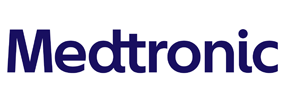| An Anatomical Study of Laminar Angle for the Placement of Translaminar Facet Screw and A Clinical Application of PercutaneousTranslaminar Facet Screw Fixation |
|
Chan Shik Shim, M.D., Bong Arm Rhee, M.D.1, Young Jin Lim, M.D.1, Jun Seok Koh, MD.1, Gook Ki Kim, M.D.1 and Tae Sung Kim, M.D.1 |
|
Department of Neurosurgery, Wooridul Spine Hospital, Seoul, Korea, 1Department of Neurosurgery, College of Medicine Kyung Hee University, Seoul, Korea. |
| 후궁경유 후관절 나사못 고정을 위한 요추 후궁각에 대한 해부학적 연구와 경피적 후궁경유 후관절 고정술의 임상적 적용 |
|
심찬식ㆍ이봉암1ㆍ임영진1ㆍ고준석1ㆍ김국기1ㆍ김태성1 |
|
우리들병원 신경외과, 경희대학교 의과대학 신경외과학교실1 |
|
|
|
|
| Abstract |
Objective
This study was done to make a reference data of the laminar angles to be used in preoperative planning of percutaneous translaminar facet screw fixation and to determine the technical feasibility, safety and clinical efficacy of the fluoroscopically-assisted posterior percutaneous translaminar facet screw fixation following anterior lumbar interbody fusion.
Methods
The laminar angles from L2 to L5 of 120 Korean were measured using CT scan. Also, clinical data of 20 patients who underwent anterior lumbar interbody fusion followed by fluoroscopically-assisted percutaneous translaminar facet screw fixation was reviewed.
Results
The mean laminar angle of L2 was 45.59 ±2.68 , L3 46.78 ±2.75 , L4 43.65 ±3.01 and L5 39.67 ±2.76 . The differences of the angles according to levels were significant statistically(p<0.05). In clinical data, 7 screws(10.8%) of 65 screws violated walls of laminae but there was no direct neural injury by the screws. The purchases of facet joint were all successful. Radiological fusion occurred in all fusion levels. There was one complication related to facet screw fixation, in which the distal tip of a superior articular process was fractured due to repeated drilling with a K-wire.
Conclusion
The laminar angles of lumbar spines are different according to vertebral levels. The fluoroscopically-assisted percutaneous translaminar facet screw fixation is technically feasible. It seems that percutaneous translaminar facet screw fixation is a useful, minimally invasive posterior augmenting method following anterior lumbar interbody fusion.
|
| Keywords:
Laminar angle, Translaminar facet screw fixation, Percutaneous, Anterior lumbar interbody fusion, Minimally invasive spinal surgery |
|



 PDF Links
PDF Links
 Full text via DOI
Full text via DOI
 Download Citation
Download Citation




